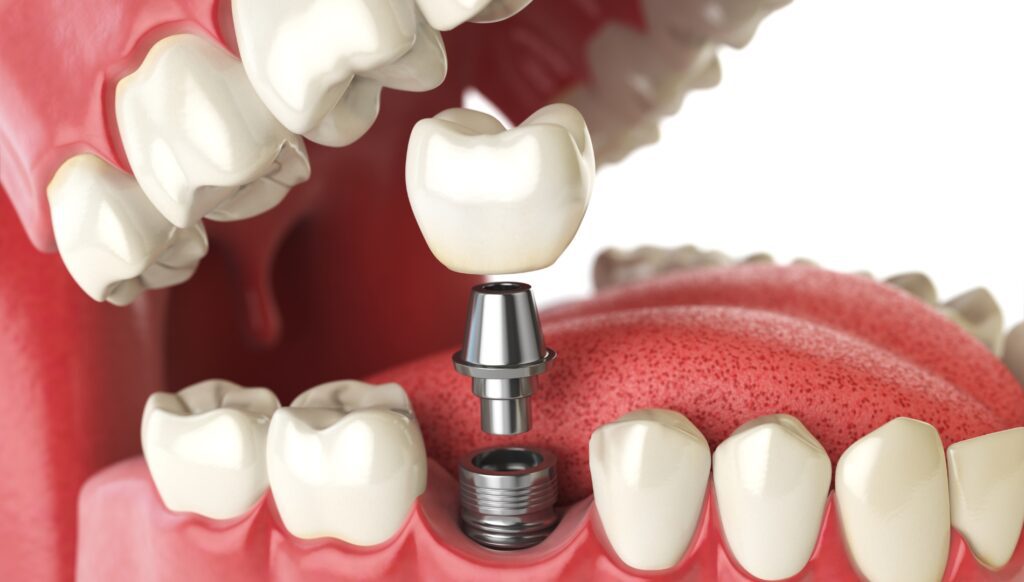Implants
Dental implants are a highly effective and permanent solution for replacing missing or severely damaged teeth. An implant is a titanium post that is surgically placed into the jawbone, where it serves as a replacement root for a new tooth. Once the implant integrates with the bone in a process called osseointegration, a custom-made crown or bridge is attached to restore both the function and appearance of your natural teeth. The Dental Implant Process::
Consultation: Your dentist will evaluate your oral health and determine if you're a good candidate for implants. This may include X-rays and 3D imaging to assess the condition of your jawbone.
Implant Placement: During the first procedure, a small titanium post is surgically placed into the jawbone. The area is then allowed to heal for a few months.
Healing and Integration: The implant integrates with the jawbone in a process known as osseointegration, which typically takes 3 to 6 months.
Abutment Placement: Once the implant is fully integrated, an abutment is placed on top of the implant to connect the crown or bridge.
Crown Placement: Finally, a custom crown, bridge, or denture is securely placed on the abutment, completing the restoration.
Benefits of Implants
Dental implants offer a stable, reliable, and aesthetically pleasing option for those seeking to restore their smile and oral health. With advances in dental technology, implants have become the preferred solution for tooth replacement, providing a functional and beautiful result.
- Natural-Looking Results
- Long-Term Durability
- No Impact on Adjacent Teeth
- Preserved Jawbone Health



